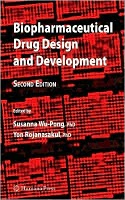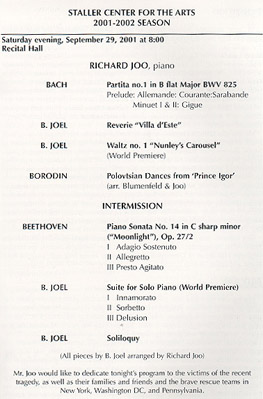
The Phrenicea scenario of the future as presented on these web pages was conceived "way back" in 1999. Although it won't be until about 2050 before we can boast about the accuracy of the Phrenicea vision, perhaps we'll be as prescient as Wiley's crystal gazer: Phrenicea Premise:If the 20th century could be labeled the "Century of the Computer," then it is our view that the 21st century will become "The Century of DNA." Phrenicea Bull's-eye?Research text Biopharmaceutical Drug Design and Development, Second Edition (page 28) concurs:
Hmm... Phrenicea Premise:The short story "The Engagement of Phrenicea" way back in May 1999 envisioned:Solar electric trains became the premier form of transportation, with tracks laid upon what were highways for automobiles. All petroleum-powered cars were banned worldwide in 2040 to help halt global warming. Phrenicea Bull's-eye?The March 23, 2009 issue of TIME magazine covers "10 Ideas Changing the World Right Now" and Reinstating the Interstate is Number 4 on the list:"... the biggest single chunk of infra-structure in the U.S. is the interstate highway system, more than 47,000 miles (76,000 km) of multilane roadways connecting every major American city. And people who spend time envisioning improved systems for energy and transit have ideas for the interstates that go far beyond fresh asphalt and new guard-rails. They've been talking up ways in which the big roads could become the backbone of a larger network of railways..." Hmm..., wonder where they got that idea a full decade after Phrenicea! Phrenicea Premise:May 1999 — The short story "The Engagement of Phrenicea" recounts:She watched as her mom turned into grandma’s old driveway in her electric runabout, a vehicle very similar to the golf cart from generation’s past. The large driveway was moot now, since petroleum-powered cars were banned worldwide in 2040 to help halt global warming. Phrenicea Bull's-eye?The Paris Motor Show:
Eclectic the first autonomous vehicle in the history of the automobile, opens up a new era in the field of mobility : reserved for daily driving in urban areas, its low energy consumption makes it the most economical environmental vehicle ever built. Hmm..., Hummm! Phrenicea Premise:May 1999 — The short story "The Engagement of Phrenicea" foretells (paraphrased):Cell farming is becoming popular nationwide. Basically, a homeowner’s land is loaned to growers for a considerable fee for them to plant fruit and vegetables for distribution to local exchanges. The do-it-yourselfer can go it alone, but must have the greenest of thumbs... Phrenicea Bull's-eye?March 12, 2007 TIME magazine cover:"The best food you can eat may be in your own backyard."
Hmm..., Mmmmm! Phrenicea Premise:As the third-world educated their masses, they became competitive intellectually; thus raising their standard of living from poverty, starvation and homelessness. Conversely, the already-developed nations, as a result of "globalization" and its consequence — overwhelming competition — found their living standards falling. - and - Ironically, the most prestigious jobs in the mid-21st century are non-virtual, requiring physical strength, manual dexterity and coordination — skills that are becoming more and more rare... Phrenicea Bull's-eye?March 20, 2006 — Fortune magazine reports:"College graduates look more outsourceable by the day. Hmm... Phrenicea Premise: (propounded way back in October 2000)Phrenicea's technology is based on biology. Foremost is the Phrenicea braincomb, a complex of individual hexagonal chambers suffused with synthetic cerebrospinal fluid that human brains ultimately call home. The braincomb's design is based on the honeycomb conjecture, which postulates that the hexagon grid is the most efficient utilization of space — which Nature's bees seem to "know" instinctively.Phrenicea Bull's-eye?The July 21, 2005 issue of WebProNews.com reports:"In the near future, the "web" concept may prove too primitive to properly describe the evolutionary nature of the beast. Something more abstract perhaps, like Jung's collective unconscious model — a digital beehive of collective information, honeycombs stacked high and deep with information. And so, searching the nectars of the hive should also change as spiders evolve into honeybees." Hmm..., that sounds like...bzzzzzzzzzzzzzzzz... Phrenicea! Phrenicea Premise:"Somnam U" is the humorous or colloquial term for the Sleep and Study program that is possible by engaging with Phrenicea while asleep. Sleep and Study helps to reinforce whatever is accessed during a day's almost constant engagement with Phrenicea, while weaving in the sleeper's mind a web of data interrelationships from all of the various disciplines.Phrenicea Bull's-eye?The December 20, 2004 issue of Time magazine reports:"[A theory] which has been gaining currency, is that sleep operates in some mysterious way to help you master various skills, such as how to play the piano and ride a bike." Hmm..., maybe sleep is for more than just "rest"! Phrenicea Premise:Phrenicea becomes the central source of knowledge for the human race, accessible not via computer or other device, but by mere thought that is indistinguishable from what was before simply "thinking."Phrenicea Bull's-eye?December 15, 2004 — Newsday quotes Jason Pontin, editor-in-chief of Technology Review:"Sergey Brin, one of the founders [of Google], once told me that the perfect search engine would be like the mind of God, that it would know everything and be everywhere. That's what they're up to."September, 2004 — Playboy magazine's "Playboy Interview" with Google founders quotes Sergey Brin: "Where will [search engine progress] lead? Who knows? But it's credible to imagine a leap as great as that from hunting through library stacks to a Google session, when we leap from today's search engines to having the entirety of the world's information as just one of our thoughts." Hmm..., that sounds like... Phrenicea! Phrenicea Premise:May 1999 — The short story "The Engagement of Phrenicea" foretells:[Artificial] genes produce hormonal parameters and switches — in simplistic terms — that could be set or reset by Phrenicea to control or monitor behavior "officially" defined as antisocial, criminal, etc. Phrenicea Bull's-eye?May, 2008 — Scientific American magazine reports on DNA "Switches":"By following the trail of evolution, devices are being found within DNA — genetic "switches" — that do not encode any proteins but that regulate when and where genes are used."June 17, 2004 — the science journal Nature reports (paraphrased and highlighted): "The mammalian vole provides an excellent model for investigating the evolution of social behaviour. Prairie voles exhibit a monogamous social structure in nature, whereas closely related meadow voles are solitary and polygamous. Hmm..., genes control behavior! Phrenicea Premise:Phrenicea becomes the central source of knowledge for the human race, accessible not via computer or other device, but by mere thought that is indistinguishable from what was before simply "thinking."Phrenicea Bull's-eye?March 3, 2004 — WebProWorld.com reports on "Google Brain Implants?":"At the Search Engine Strategies conference in New York City today, Google's Director of Technology, Craig Silverstein shared his new prediction of the eventual existence of "search pets," man-made "genetically engineered beasts" implanted directly into the brain to search for facts and help us to reason and solve problems." Hmm..., wonder where he got that idea. Phrenicea Premise:We will harness DNA's innate elegance for many non-biological purposes. What was accomplished with hardware (constructed of inorganic elements) will eventually be achieved with software (materials made organically). Example: The creation of a man-made 24th-chromosome pair to effect money transfer and record wealth (or worth!).Phrenicea Bull's-eye?January 6, 2004 — the Proceedings of the National Academy of Sciences reports:"Scientists have utilized synthetic DNA to manufacture nano-scale tubes that assemble themselves into wires for use in tiny electronic devices..."Read the abstract... Phrenicea Premise:Conscious thought is enough to engage a session with Phrenicea. Information is returned instantaneously... Answers to any academic question can be provided... For topics involving subjective thought or interpretation, Phrenicea provides multiple sources of information allowing the engager to analyze, evaluate and form an opinion...Phrenicea Bull's-eye?December 22, 2003 — Time magazine's "Technology" section reports:"The Internet is swiftly becoming the primary repository of the bulk of human information... The web is rapidly supplanting other media as the primary means by which people get information about the world..."These are the prerequisite baby steps leading to centralized information and instant access not via the Internet/web, but via the engagement of Phrenicea. Phrenicea Premise:Phrenicea's braincomb technology is based on biology, where the complexities found in nature are copied on a grand scale.Phrenicea Bull's-eye?December 8, 2003 — Fortune magazine's "Brainstorm" section reports:"In the [research] labs, says Sunil Misra, chief security advisor for Unisys, technologists are developing safeguards for [computer] networks that will 'use the human immune system as a model for how to detect anomalous behavior and respond.'"We predict we will be hearing more and more about how human systems will be used as a model for our man-made creations. Phrenicea Premise:May 1999 — The short story "The Engagement of Phrenicea" foretells:Science finally gains an intrinsic knowledge of what is required by the human body for optimum health, beyond what was attained through empirical studies. By deciphering all of the human biological chemical processes it became possible to tailor a single product to fuel them — Polynutriment. Phrenicea Bull's-eye?June 27, 2003 — the science journal Nature reports:"A single pill given to everyone aged over 55 could cut heart disease in developed countries by 80%, a group of medical researchers say.December 17, 2004 — LONDON (Reuters) takes it a step further with this report: If you enjoy good food and don't like the idea of taking pills to reduce the risks of heart attack or stroke, it could be time to try the Polymeal. The Polymeal consists of wine, fish, dark chocolate, fruit and vegetables, garlic and almonds. The ingredients should be taken daily, apart from fish which could be eaten about four times a week, as part of a balanced diet.First a single pill, then Polymeal, then maybe a single food? Polynutriment anyone? Phrenicea Premise:May 1999 — The short story "The Engagement of Phrenicea" describes:The tiny Intrachip — organically constructed — is a vital component that implants itself under the host's skin. It triggers a biological interface by splicing artificial genes into the host's DNA that produce proteins and nerve tissue to connect with it. Phrenicea has the potential to simultaneously monitor every individual on the planet! Phrenicea Bull's-eye?January 2003 — Scientific American editors write:"[This past year] Applied Digital Solutions in Palm Beach, Fla., introduced its VeriChip, an implantable device the size of a grain of rice that fits under the skin. When a handheld scanner prods it with radio waves, the chip answers with a short burst of identifying data. The immediate applications are for security and identification." Phrenicea Premise:Technology will one day empower the individual with the potential to change or destroy on a scale formerly limited to mighty superpower nations.Phrenicea Bull's-eye?An alert Phrenicea fan (who wishes to remain anonymous) sent us an email indicating that our three-year-old scenario may be catching on.She reports that the November-December 2002 issue of The Futurist contains an article (page 41) written by doctoral fellow João Pedrode Magalhães (University of Namur-Facultès Universitairs Notre-Dame de la Paix in Belgum) addressing what might occur when a single person has the potential to destroy humanity. He concludes: "The most likely future of humanity will involve an initial decrease in personal freedom for an increase in security. The percentage of humans with power will decrease with time, which might lead to humankind being ruled by a single mind. Even if taking over humankind is difficult and occurs far in the future, it is an irreversible step. Therefore, if we look far into the future, we see that one mind might eventually rule mankind, or what is left of humankind at that time."We here at Phrenicea headquarters are flattered. We expect — as the century unfolds — to find many more sitings congruent with our vision which we will chronicle in this space. We will henceforth immodestly reference these finds with a newly coined word, "phreni-FINDs." Phrenicea Premise:Just as the force of gravity — by the accumulation of molecular mass — is manifested but by itself cannot be clearly explained;could Man, by assembling Phrenicea brain-by-brain, have stumbled upon another unexplained phenomenon — a benevolent, ethereal, spiritually divine presence? Phrenicea Bull's-eye?The tragic events on September 11, 2001 may have provided evidence that a brain accretion effect may not be as farfetched as it might seem at first glance.A sensational caption in the New York Post's September 29, 2002 issue declared: "Scientists believe the lottery numbers [911] of September 11, 2002, may have resulted from the thoughts of millions of brains."Granted, the New York Post is a tabloid newspaper and not a scholarly journal. However, the accompanying article referred to a serious endeavor — the Global Consciousness Project — to record evidence of fields generated by individual consciousness combining and ultimately having a global presence. It appears that evidence was recorded on September 11, 2001. What follows is a brief summary of their findings: "We do not know if there is such a thing as a global consciousness, but if there is, it was moved by the events of September 11, 2001. It appears that the coherence and intensity of our common reaction created a sustained pulse of order in the random flow of numbers from our instruments. These patterns where there should be none look like reflections of our concentrated focus, as the riveting events drew us from our individual concerns and melded us into an extraordinary coherence. Maybe we became, briefly, a global consciousness." Of course this is controversial. Modern Science traditionally is skeptical of any idea that cannot be observed, measured or tested - and rightly so. However, we should keep in mind that we are only as perceptive as our senses, or the sensors we construct. We know that we have no sensation to a vast portion of the electromagnetic spectrum for example. And our arrogant confidence has been proven to be ignorance many times in the past. Phrenicea Premise:Mid-21st-century scientists — finally facing reality — give up on the notion of space exploration, travel and contacting extraterrestrial life.Phrenicea Bull's-eye?An online article from the Scientific American website, "Lost in Space," paints a somewhat bleak picture of the current state of the U.S. NASA programs. Here are several snippets from the article:
The United States is the driving force for continued endeavors in space —
from a funding perspective at least. It is by default the make-or-break nation in
terms of substantive future exploration. Given the growing number and magnitude of problems that need
attention here on Earth, we surmise that Man's destiny does not include the realms of
space.
Phrenicea Premise:Industrial farming of poultry, beef and pork is banned due to the massive polluting effects of fecal waste.Phrenicea Bull's-eye?The March 18, 2002 issue of Fortune magazine reports that the EPA is cracking down on manure, tons of it.Inadequate state regulations, which are not uniform, will be replaced with federal standards. Still, this mere acknowledgement of the problem falls short of solving the gross polluting problem. The farmers' pig-like squeals protesting the associated costs drown out the cries for a real clean-up. Phrenicea Premise:The exorbitant price of oil becomes a prime factor in Phrenicea’s cultural infiltration.Phrenicea Bull's-eye?Writes oil expert, Kenneth S. Deffeyes in Hubbert's Peak: The Impending World Oil Shortage:"Fossil fuels are a one-time gift that lifted us up from subsistence agriculture... no renewable energy projects can be brought on at a sufficient rate to avoid a bidding war for the remaining oil."It's going to be tough going in the years ahead. Phrenicea Premise:Twentieth-century-styled rock'n'roll supplants traditional classical music as the genre to be revered.Phrenicea Bull's-eye?Today's snobs laugh at such a prediction, but the fact is some of these rock stars are already becoming seriously juxtaposed with the traditional classical masters, as shown on the program below, where Billy Joel's "serious" compositions are interweaved with Beethoven's in a concert performed in 2001. His rock'n'roll genius will be similarly appreciated generations hence.
Also, not to be overlooked, is that Sir Paul McCartney was voted the greatest composer of the last millennium by BBC News Online readers, beating by a wide margin Wolfgang Amadeus Mozart, followed by Johann Sebastian Bach in third place! Chronicling the Future®
This page belongs to
Entire site ©2000-2011 John Herman. All rights reserved. |




